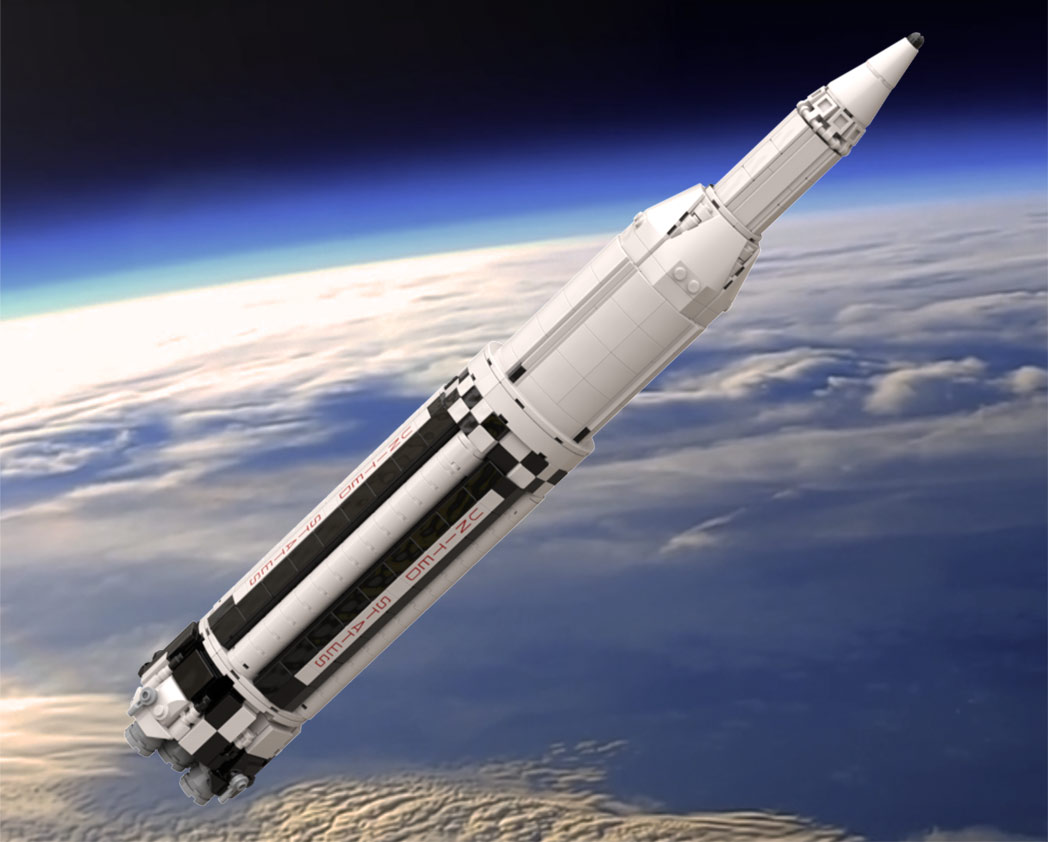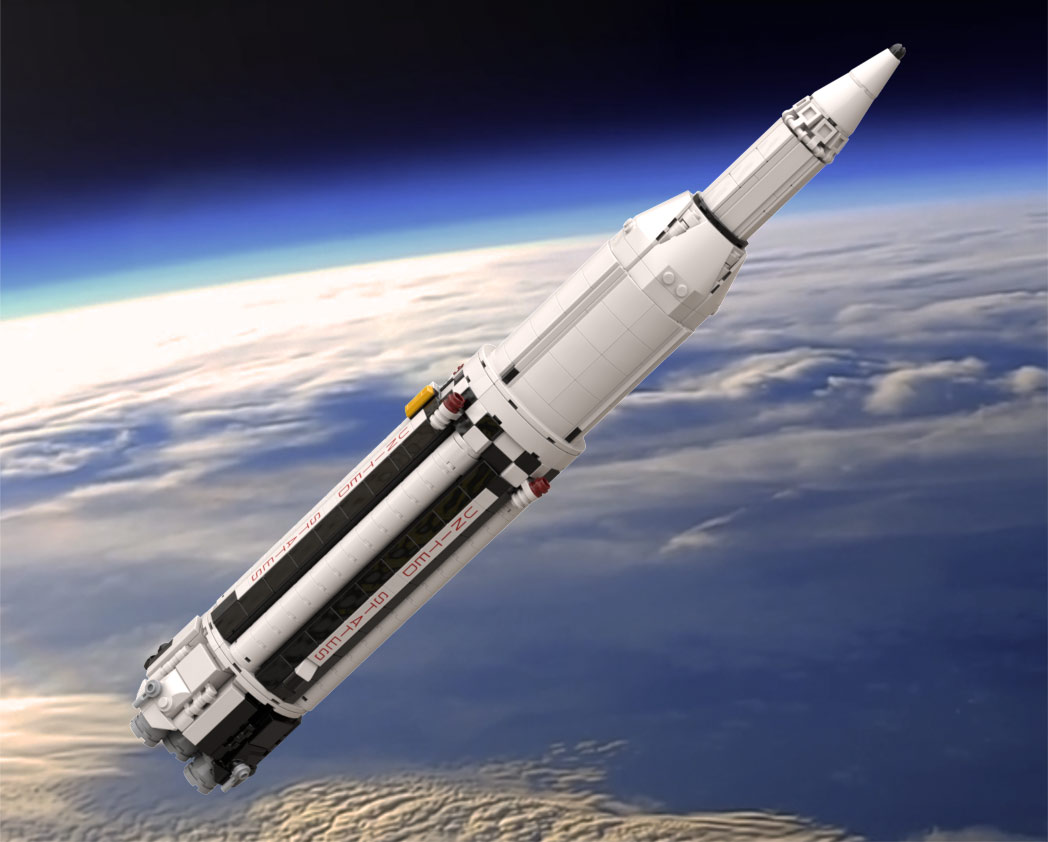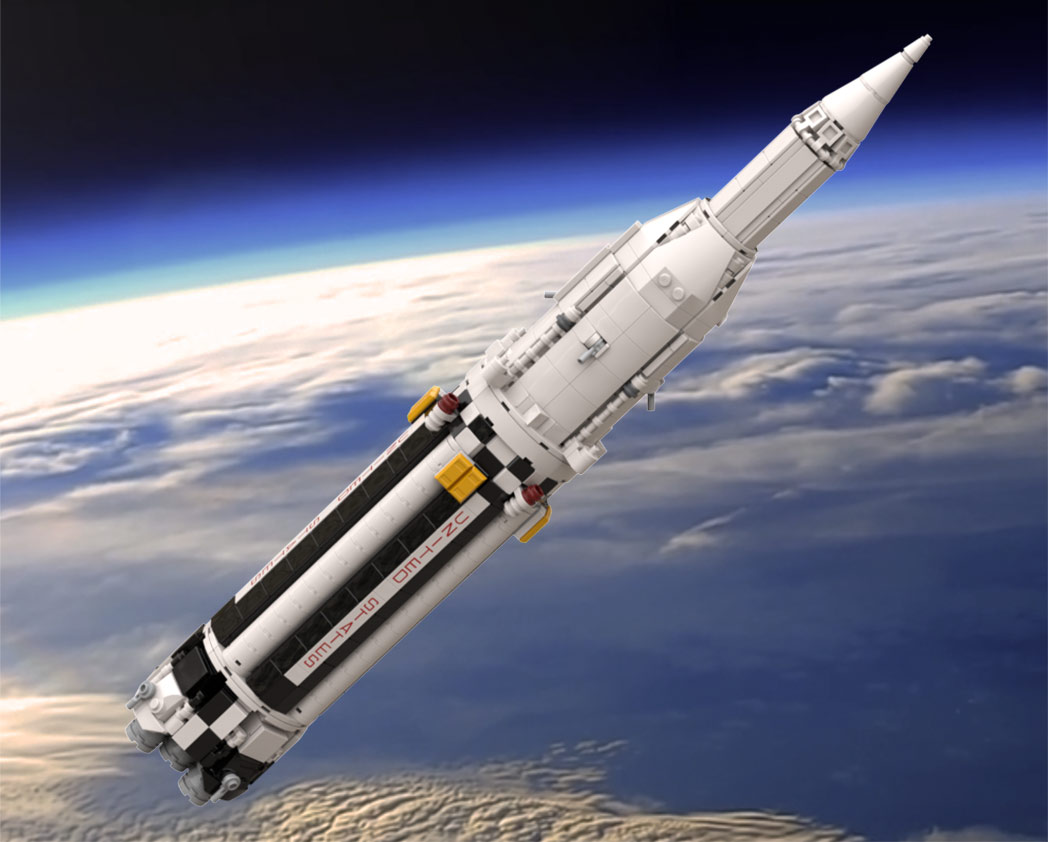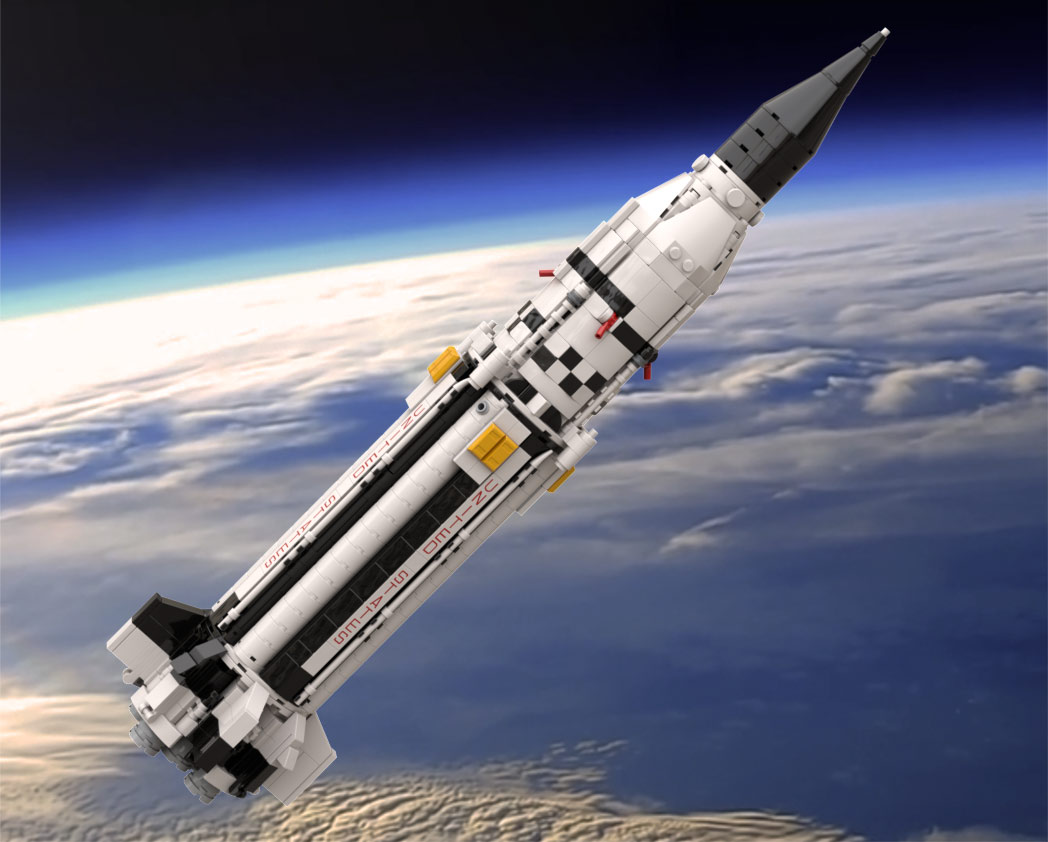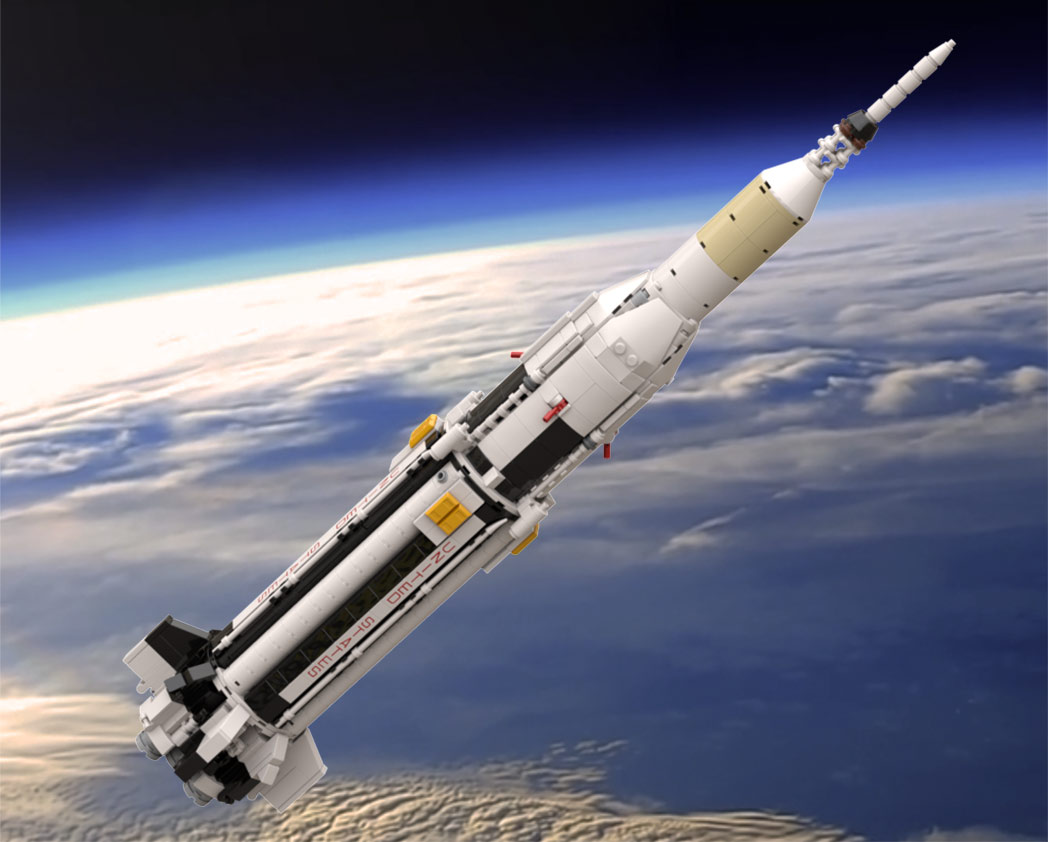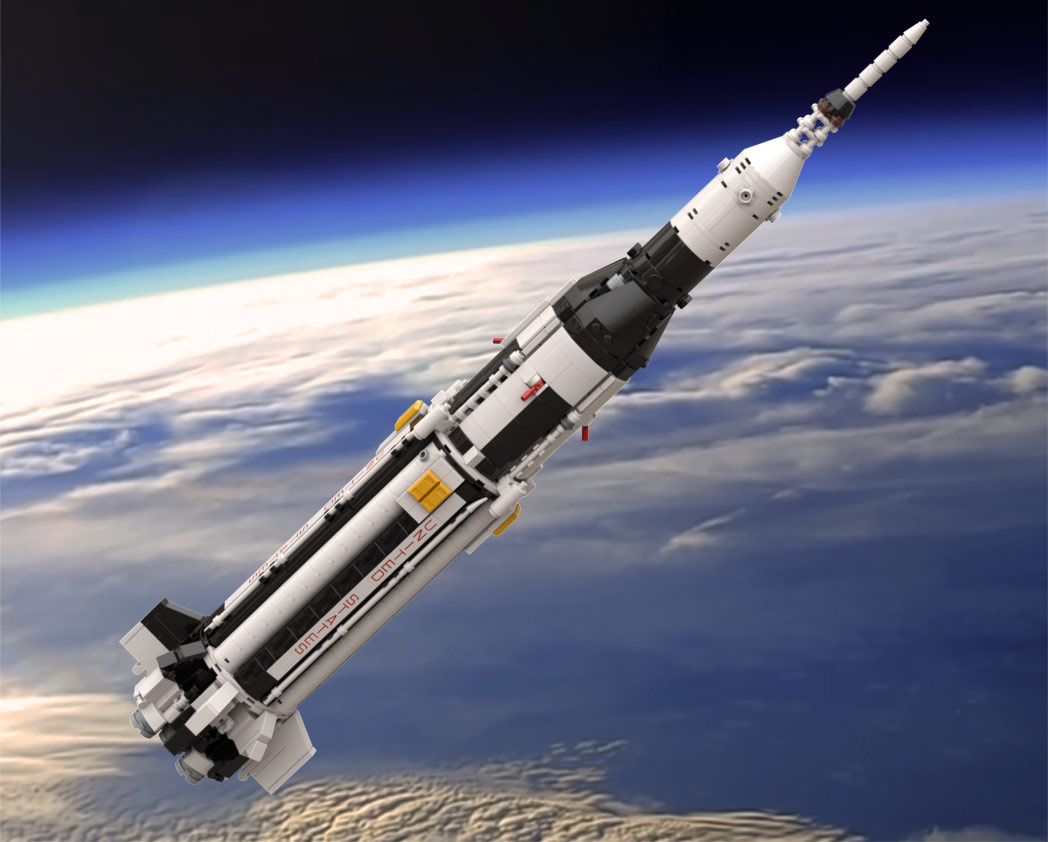
LEGO Designer:
Adam Wilde (Apollo 110)
Designed:
October 2024
Categories:
All, Apollo Program, Launch Vehicles, Medium Lift Launch Vehicle, Space Agency - NASA
Launch Vehicle Details
Stages:
2 stage
Length:
58 m
Diameter:
6.53 m
Mass at Launch:
508 tonnes
Low Earth Orbit Capacity:
9000 kg
Total Thrust:
5768 kN
Apogee:
200 km
Class:
Medium Lift Launch Vehicle
The first Saturn rockets to carry Apollo boilerplate spacecraft into orbit, SA-6 (launched May 28, 1964) and SA-7 (launched September 18 the same year) were also the first missions to be given Apollo–Saturn designations – AS-101 and AS-102 respectively.
The S-I first stages were essentially the same as for SA-5, though the interstage got a new black and white banded painted job that would be retained on the first/second-stage interstages through the Saturn IB and Saturn V series. And the NASCAR-adjacent roll pattern carnival on the S-IV was toned down to a more pleasing-to-the-eye solid black band covering the conical forward section. The most exciting changes, though, were all forward of the Instrument Unit where a new adapter and insert were topped with the boilerplate Apollo spacecraft and Launch Escape System. For the first time really these rockets really looked like Apollo–Saturn launch vehicles.
After a couple of scrubs, AS-101’s flight was notable for the unscheduled early shut-down of H-1 engine number eight, but the remaining engines burned 2.7 seconds longer to compensate and staging and LES jettison proceeded as planned. Having completed 54 orbits the S-IV with Apollo spacecraft attached re-entered the atmosphere over the Pacific Ocean on June 1.
AS-102 saw the maiden Saturn flight of the ST-124 programmable guidance computer, which could be reprogrammed in-flight to correct anomalies. After 59 orbits it came down over the Indian Ocean on September 22. The jettisoned camera pods from AS-102 were initially thought lost as they landed downrange and couldn’t be recovered due to Hurricane Gladys, but two barnacle-encrusted pods washed ashore a couple of months later, film intact.
At 1:110 scale this is a great companion model to the LEGO NASA Apollo Saturn V. Purchase includes a BrickLink Wishlist XML file and carefully prepared instructions with annotations to point out what the various details/sections are.Sections of this model are adapted from David Welling’s OG Saturn I MOCs and it also repurposes the Saturn IB tank design devised by saxus, which is used with his kind permission.
Part count: bricks, lots.
| Unit | width | length | height |
|---|---|---|---|
| Studs | |||
| Inches | |||
| Centimetres |
No: TNo: Serial Type Date LS Payload
1 1 SA-1 Saturn-1 (Bl.-1) 27.10.1961 CC LC-34 * (R/D) 2 2 SA-2 Saturn-1 (Bl.-1) 25.04.1962 CC LC-34 * Highwater 1 3 3 SA-3 Saturn-1 (Bl.-1) 16.11.1962 CC LC-34 * Highwater 2 4 4 SA-4 Saturn-1 (Bl.-1) 28.03.1963 CC LC-34 * (R/D) 5 1 SA-5 Saturn-1 (Bl.-2) 29.01.1964 CC LC-37B Saturn-SA 5 6 2 SA-6 Saturn-1 (Bl.-2) 28.05.1964 CC LC-37B Saturn-SA 6 & Apollo 101 (BP 13) 7 3 SA-7 Saturn-1 (Bl.-2) 18.09.1964 CC LC-37B Saturn-SA 7 & Apollo 102 (BP 15) 8 4 SA-9 Saturn-1 (Bl.-2) 16.02.1965 CC LC-37B Pegasus 1 / Apollo 103 (BP 16) 9 5 SA-8 Saturn-1 (Bl.-2) 25.05.1965 CC LC-37B Pegasus 2 / Apollo 104 (BP 26) 10 6 SA-10 Saturn-1 (Bl.-2) 30.07.1965 CC LC-37B Pegasus 3 / Apollo 105 (BP 9A) 11 1 SA-201 Saturn-1B 26.02.1966 CC LC-34 * Apollo 201 (CSM 009) 12 2 SA-203 Saturn-1B 05.07.1966 CC LC-37B Apollo 203 13 3 SA-202 Saturn-1B 25.08.1966 CC LC-34 * Apollo 202 (CSM 011) 14 4 SA-204 Saturn-1B 22.01.1968 CC LC-37B LM 1 (Apollo 5) 15 5 SA-205 Saturn-1B 11.10.1968 CC LC-34 Apollo 7 (CSM 101) 16 6 SA-206 Saturn-1B 25.05.1973 CCK LC-39B Skylab 2 (Apollo SLM-1, CSM 116) 17 7 SA-207 Saturn-1B 28.07.1973 CCK LC-39B Skylab 3 (Apollo SLM-2, CSM 117) / S150 (Galactic X-ray Mapping) 18 8 SA-208 Saturn-1B 16.11.1973 CCK LC-39B Skylab 4 (Apollo SLM-3, CSM 118) 19 9 SA-210 Saturn-1B 15.07.1975 CCK LC-39B ASTP (Apollo-Soyuz, CSM 111) / ASTP-DM Launch sites: CC = Cape Canaveral Air Force Station, Eastern Test Range, Cape Canaveral, Florida, USA CCK = NASA John F. Kennedy Space Center, Cape Canaveral, Florida, USA * = suborbital
Launch History information from space.skyrocket.de
Launch History information from space.skyrocket.de


